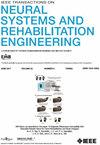High-Order Graphical Topology Analysis of Brain Functional Connectivity Networks Using fMRI
IF 4.8
2区 医学
Q2 ENGINEERING, BIOMEDICAL
IEEE Transactions on Neural Systems and Rehabilitation Engineering
Pub Date : 2025-04-25
DOI:10.1109/TNSRE.2025.3564293
引用次数: 0
Abstract
The brain connectivity network can be represented as a graph to reveal its intrinsic topological properties. While classical graph theory provides a powerful framework for examining brain connectivity patterns, it often focuses on low-order graphical indicators and pays less attention to high-order topological metrics, which are crucial to the comprehensive understanding of brain topology. In this paper, we capture high-order topological features via a graphical topology analysis framework for brain connectivity networks derived from functional Magnetic Resonance Imaging (fMRI). Several high-order metrics are examined across varying sparsity levels of binary graphs to trace the evolution of brain networks. Topological phase transitions are primarily investigated that reflect brain criticality, and a novel indicator called “redundant energy” is proposed to measure the chaos level of the brain. Extensive experiments on diverse datasets from healthy controls validate the reproducibility and generalizability of our framework. The results demonstrate that around critical points, classical graph theoretical indicators change sharply, driven by crucial brain regions that have high node curvatures. Further investigations on fMRI of subjects with and without Parkinson’s disease uncover significant alterations in high-order topological features which are further associated with the severity of the disease. This study provides a fresh perspective on studying topological architectures of the brain, with the potential to expand our comprehension on brain function in both healthy and diseased states.脑功能连接网络的fMRI高阶图形拓扑分析
大脑连接网络可以用图形表示,以揭示其内在的拓扑特性。虽然经典图论为研究大脑连接模式提供了一个强大的框架,但它往往侧重于低阶图形指标,而对高阶拓扑指标关注较少,而高阶拓扑指标对全面理解大脑拓扑至关重要。在本文中,我们通过功能性磁共振成像(fMRI)衍生的脑连接网络的图形拓扑分析框架捕获高阶拓扑特征。几个高阶指标被检查在不同的稀疏程度的二值图,以跟踪大脑网络的进化。主要研究了反映大脑临界状态的拓扑相变,提出了一种新的指标“冗余能量”来衡量大脑的混沌水平。在健康对照的不同数据集上进行的大量实验验证了我们框架的可重复性和概括性。结果表明,在临界点附近,经典图理论指标急剧变化,这是由具有高节点曲率的关键大脑区域驱动的。对帕金森病患者和非帕金森病患者的fMRI进一步研究发现,高阶拓扑特征的显著改变进一步与疾病的严重程度相关。这项研究为研究大脑的拓扑结构提供了一个新的视角,有可能扩大我们对健康和患病状态下大脑功能的理解。
本文章由计算机程序翻译,如有差异,请以英文原文为准。
求助全文
约1分钟内获得全文
求助全文
来源期刊
CiteScore
8.60
自引率
8.20%
发文量
479
审稿时长
6-12 weeks
期刊介绍:
Rehabilitative and neural aspects of biomedical engineering, including functional electrical stimulation, acoustic dynamics, human performance measurement and analysis, nerve stimulation, electromyography, motor control and stimulation; and hardware and software applications for rehabilitation engineering and assistive devices.

 求助内容:
求助内容: 应助结果提醒方式:
应助结果提醒方式:


